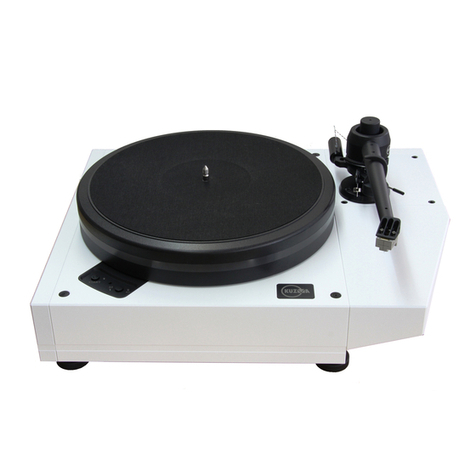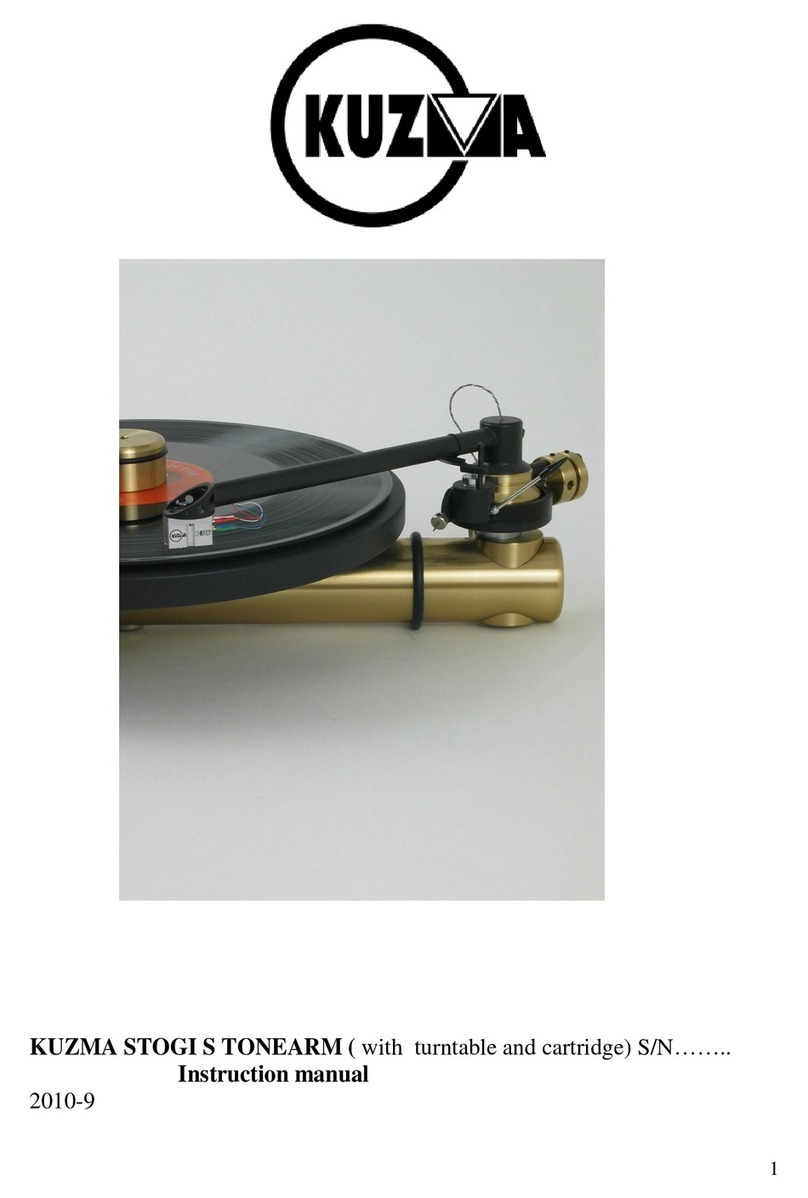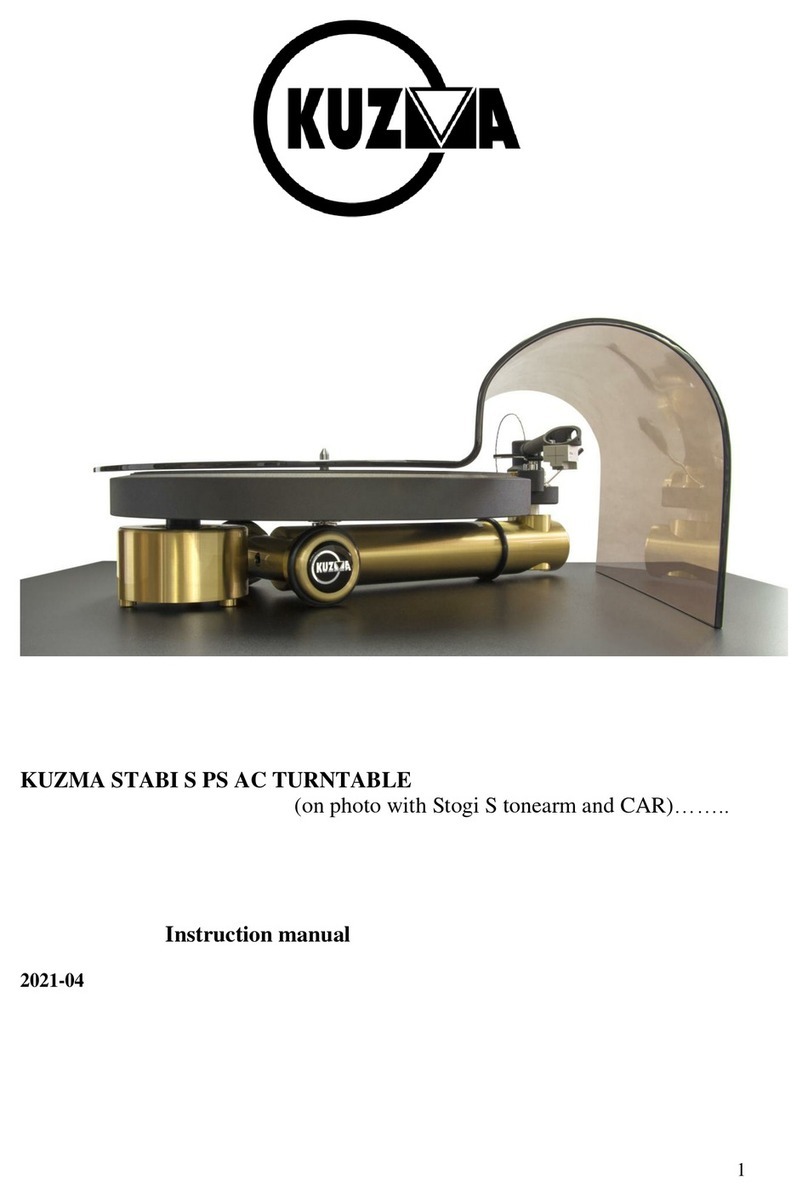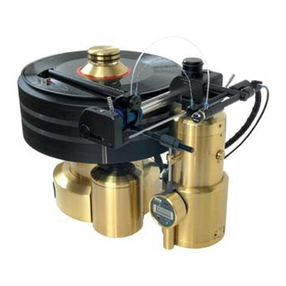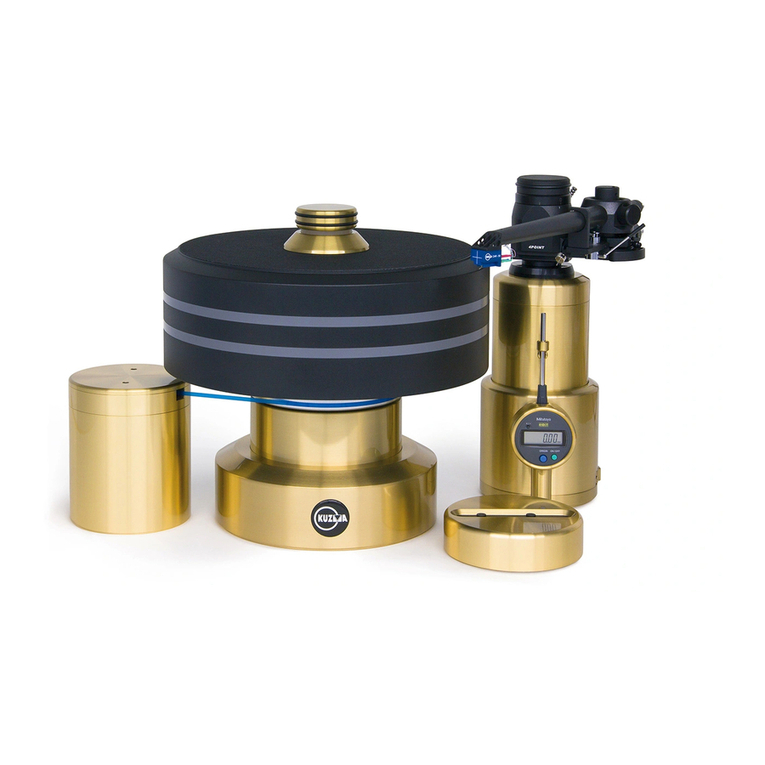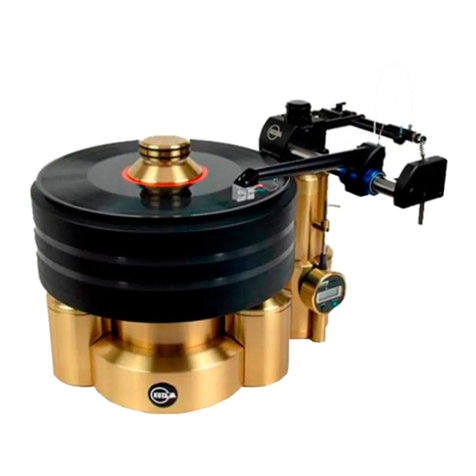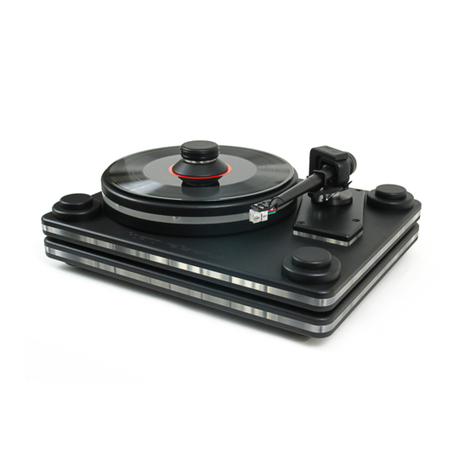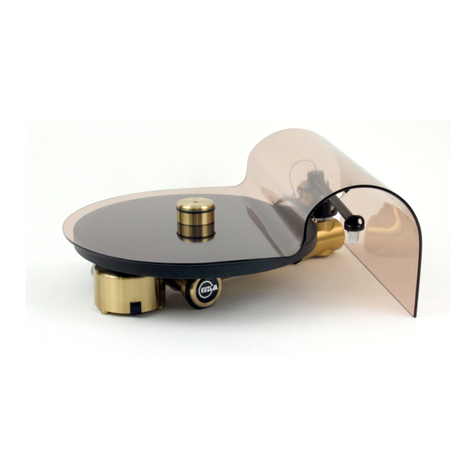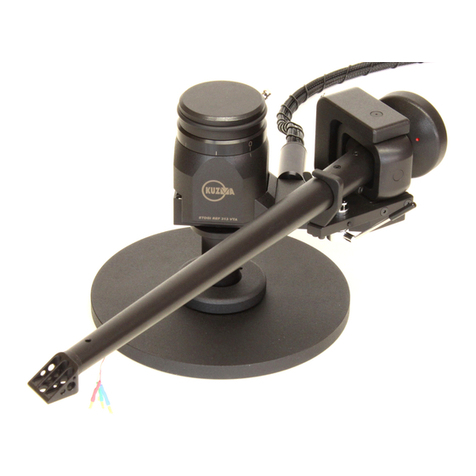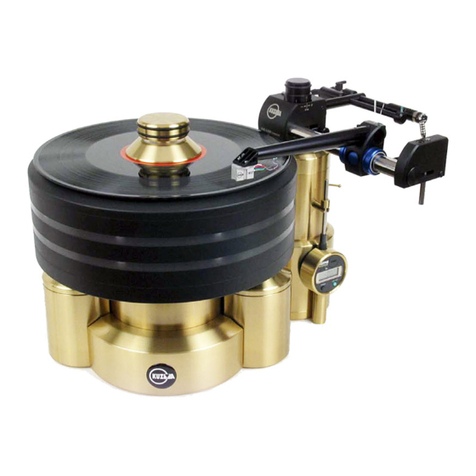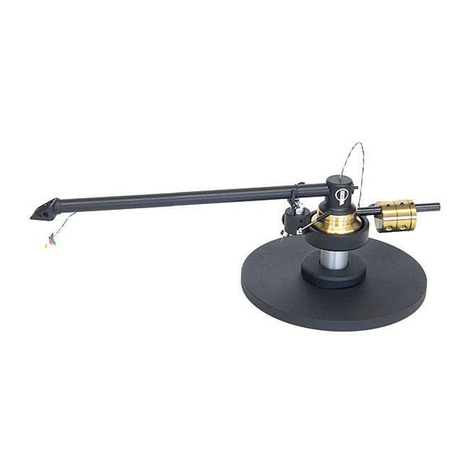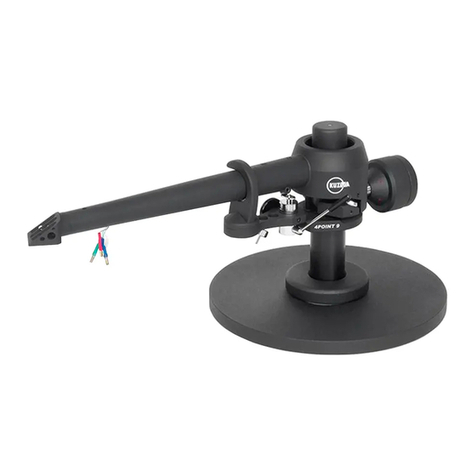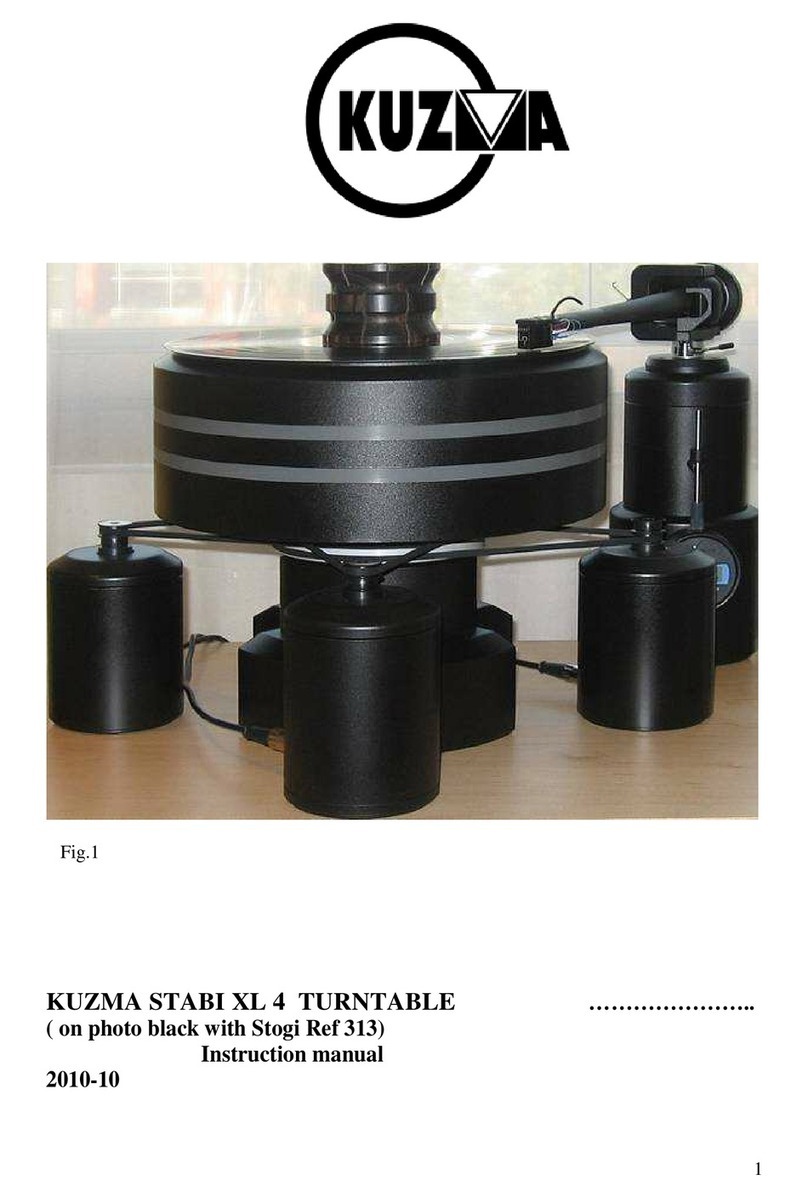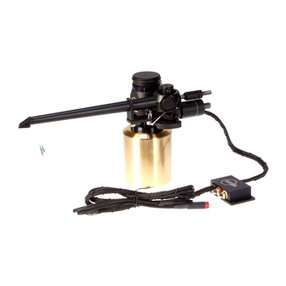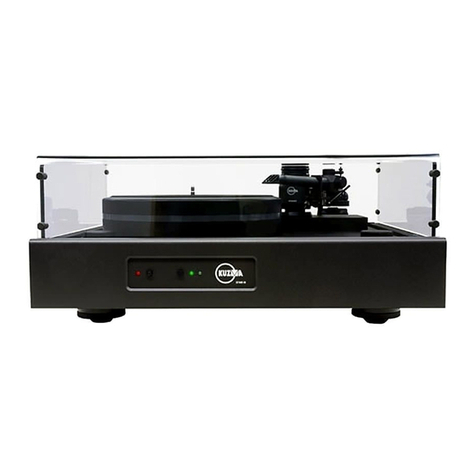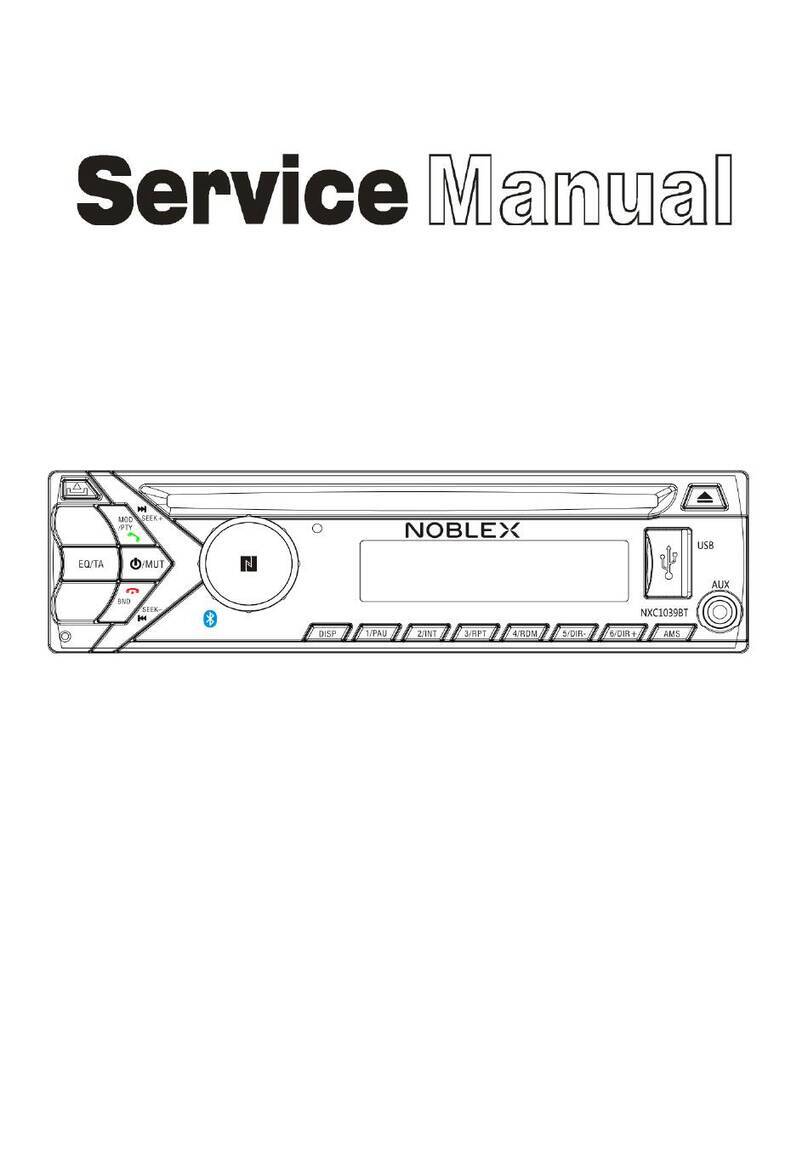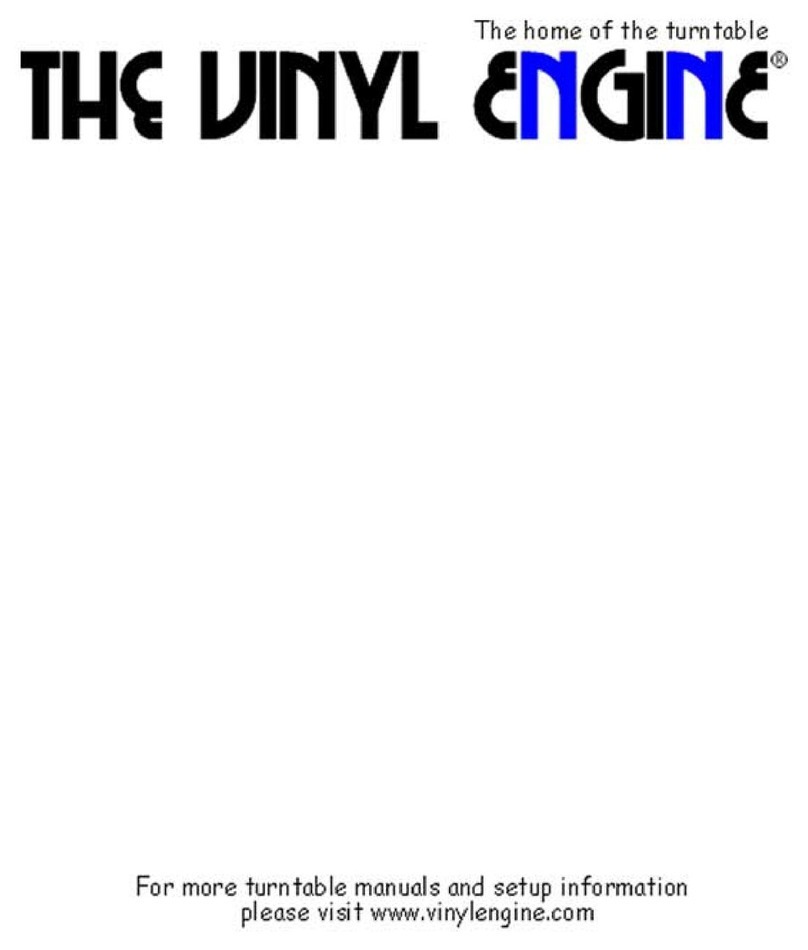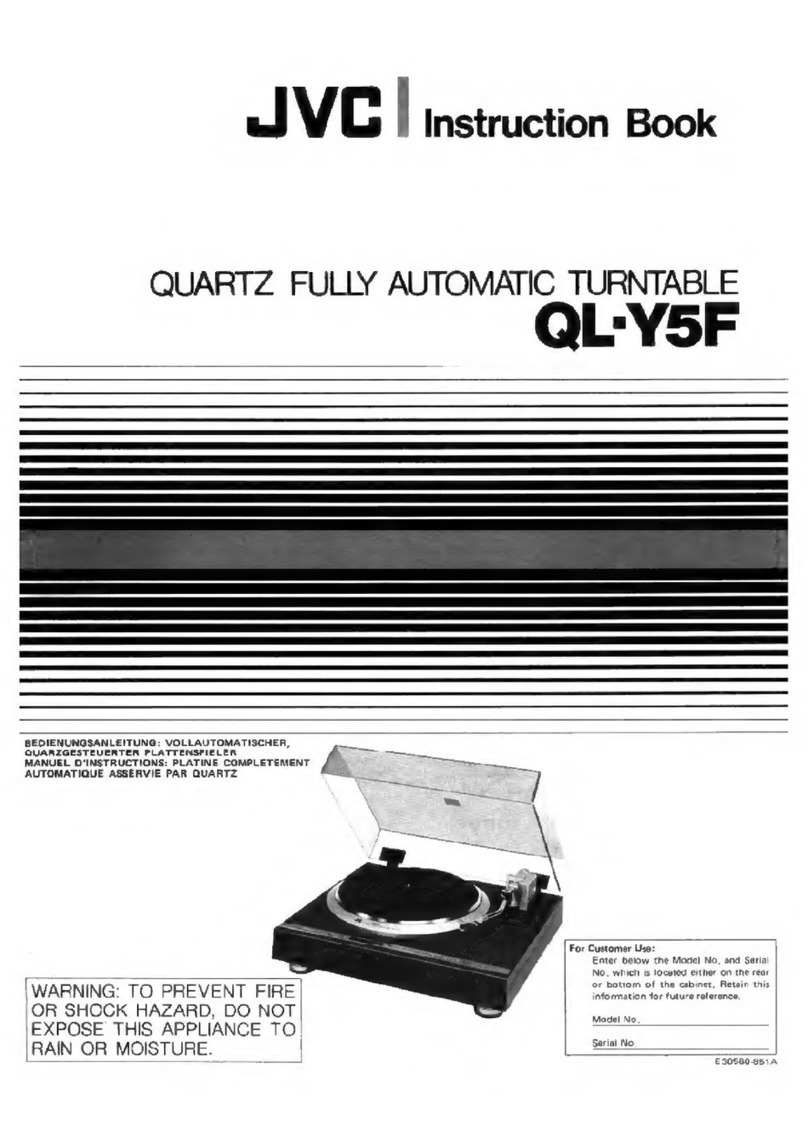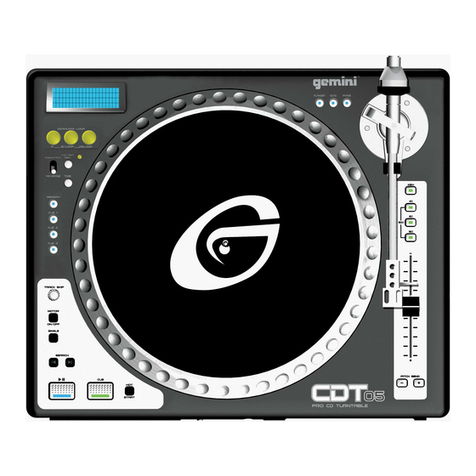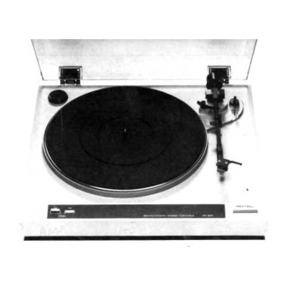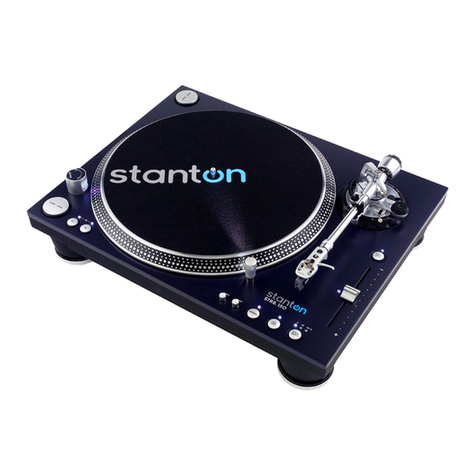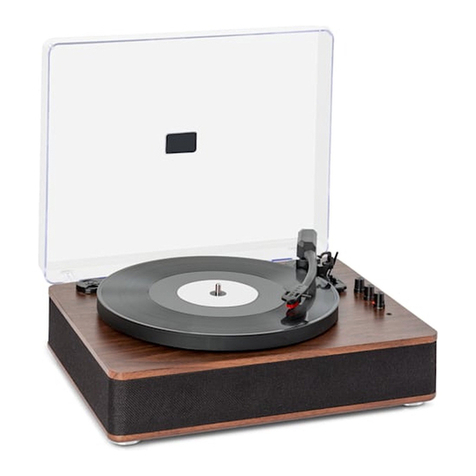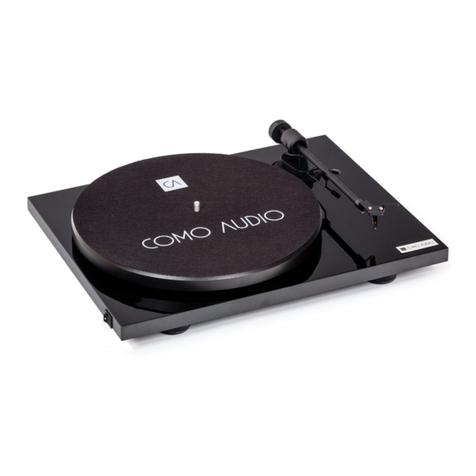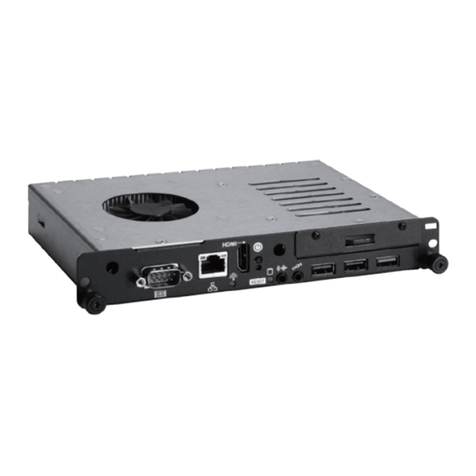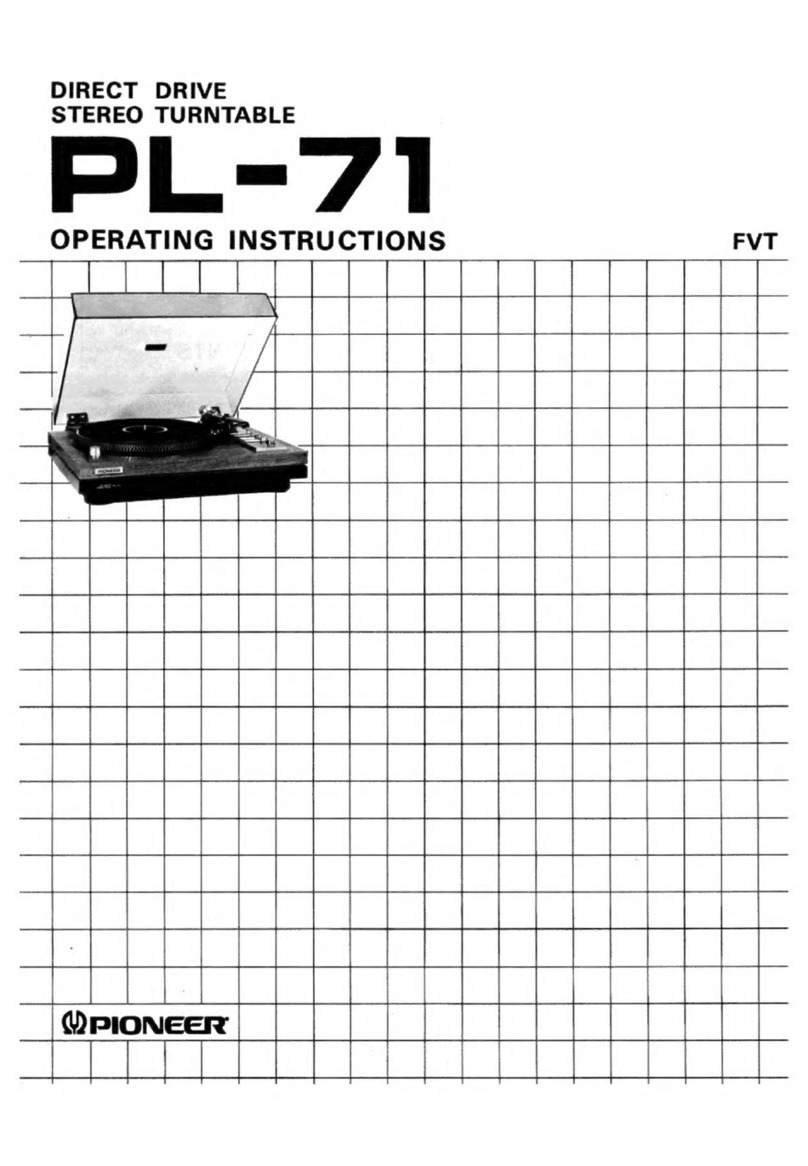3
General description
This tonearm iffers from other arms by incorporating several unique features. The zero play bearing
is configure on 4 points (spikes). There is very precise VTA a justment an , espite a longer
effective length of 353 mm (14 inches), fits the mounting istance of 291 mm ( as for 12 inches
arms).
The heart of the new construction is a unique 4 point bearing. The first set of two points
(similar to a ouble unipivot bearings) allows vertical movement. The secon set of two points
allows horizontal movement. All four points have minimal friction an zero play in all playing
irections thus ensuring the cartri ge platform an the cartri ge itself to move with very low friction
an minimal vibration across the recor . It is normal to feel slack in the bearings in certain
irections.
The whole construction is mounte on a rigi VTA tower which allows very precise VTA a justment
while playing, without any loss of rigi ity, yet with up to 0.01 mm of precision an zero play.
The main tube is constructe an machine from soli aluminium. The counterweights set balances
the tonearm an there is a secon small counterweight with which the tracking force can be finely
a juste . Azimuth can be a juste in small repeatable increments with zero play, by means of an
Allen key.
A feature of the tonearm is a unique etachable hea shell ( one spare inclu e as stan ar ). The
electrical connection is via stan ar pins but the hea shell can be simply remove by unscrewing
with an Allen key. The hea shell is fixe with a precise hexagonal locking system giving the same
rigi ity as with a fixe hea shell.
Two separate troughs amp vertical an horizontal resonances an can be finely a juste
in epen ently. The troughs can be remove from the tonearm.
Internal wiring is of superior special alloy silver wires. Set of 4 wires runs unbroken from the
cartri ge pins into a 1.4 m long tonearm cable with silver bullet connectors.
Product registration and warranty extension
Kuzma pro ucts have a non transferable 2 year limite warranty on parts an labour, which may
vary in each country.
To obtain the 5 year limite warranty from us, you nee to register the pro uct on our web site
within 30 ays of purchase. We suggest registration of pro ucts in any case because this will also
help you to receive our technical support more easily an with resale of pro ucts.
Simply register on our web site, complete the forms an you will receive an exten e five year
warranty car on your email within a few ays.
